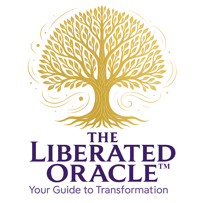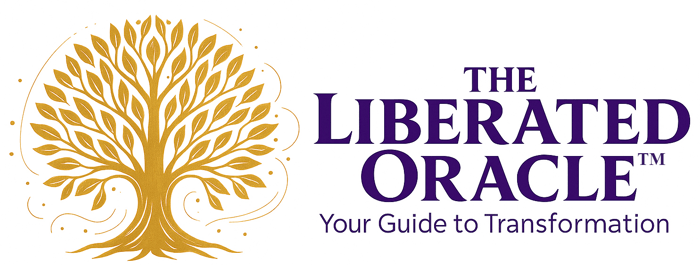The RAS: Gatekeeper of the Mind and Portal to Intuition
What you notice... you amplify. A powerful blend of neuroscience and intuition that explains how your brain filters reality—and how to train it to see the sacred. You’re not imagining the signs. You’re finally noticing them.
AWARENESSINTUITIONMINDSET
Gary Choynowski, The Liberated Oracle
3 min read
The RAS: Gatekeeper of the Mind and Portal to Intuition
Your brain is not a passive observer. It’s a gatekeeper, filtering reality like a nightclub bouncer deciding who gets in. At the heart of this mental velvet rope is a system called the Reticular Activating System, or RAS. While it sounds like something pulled from a neuroscience textbook (because it is), this tiny bundle of nerves may hold the key to understanding how our intuitive and psychic perceptions work.
What if the bridge between science and spirit isn’t so wide after all? What if your intuition isn’t some ethereal voice from the void but a trained whisper filtered through a very real neurological system? Come take a walk through this with me.
What is the RAS?
The Reticular Activating System is a network of neurons located in the brainstem that plays a critical role in regulating wakefulness, focus, and perception. Think of it as the brain’s gatekeeper. Every second, you’re bombarded by millions and millions of bits of sensory data (light, sound, temperature, smells, and more). The RAS decides what gets through to your conscious mind based on what it thinks is important.
It uses a few criteria to decide:
- Repetition (what shows up consistently)
- Emotional significance
- Novelty (what’s new or unusual)
- Intentional focus (what you consciously choose to pay attention to)
Ever noticed that after you learn a new word, you suddenly hear it everywhere? Or after buying a particular car, you see it constantly on the road? That’s not magick (well, maybe a little). That’s your RAS.
RAS and Pattern Recognition
Pattern recognition is the silent symphony behind intuition. The RAS flags recurring signals in your environment, pulling them from the sea of sensory input and placing them in front of your awareness. For the average person, this might mean noticing someone’s tone of voice. For the intuitive or psychic, this might mean recognizing subtle energetic shifts, symbolic synchronicities, or emotional undercurrents.
Your subconscious is always processing. The RAS acts like a messenger from the subconscious to the conscious mind, surfacing what it deems useful. This is why many intuitives say, “I just knew” or “I had a feeling.” What they experienced may have been the RAS delivering a distilled packet of insight collected from patterns the conscious mind couldn’t yet articulate.
The Mystic’s Filter: How Belief Shapes Intuition
Here’s where the bridge between neuroscience and metaphysics becomes illuminated: the RAS filters reality based on what you believe is important. Your belief systems program your perception.
If you believe in spiritual guides, you’ll start to notice signs, numbers, or “messages.” If you see the world as dangerous, the RAS will highlight threats. If you believe in abundance, it’ll surface opportunities. This isn’t just mindset, this is neural architecture in action.
Intuitives and psychics often train their brains to tag symbolic language as significant. Feathers, numbers, sudden emotions, or internal imagery become part of their interpretive matrix. The RAS doesn’t question whether these signals are mystical or mundane. It simply serves up what it’s told is relevant. Belief is the code that writes the filter.
Programming the RAS for Intuitive Development
So how do you turn the RAS into your intuitive ally? By feeding it consistent, intentional input.
- Visualization: Picture receiving clear intuitive messages. The RAS begins to prioritize that input.
- Affirmations: Statements like “I trust my intuition” or “I notice signs and synchronicities” create mental tags.
- Rituals: Meditation, journaling, card pulls; these train the RAS to spotlight spiritual patterns.
- Focused Intention: What you seek, you teach the RAS to find.
When you align your conscious intentions with subconscious tagging, you create a perceptual pathway for intuition to follow. The mystical meets the biological.
Spiritual Signals or Neural Noise?
A cluttered or overstimulated RAS can distort intuitive perception. Stress, trauma, or distraction can scramble your inner signal, making every hunch feel like static. That’s why grounding practices matter; they calm the noise so the true messages can come through.
Similarly, doubt can corrupt the filter. If you’ve internalized that intuition is fake or unreliable, the RAS deprioritizes those cues. You won’t notice what you don’t believe is real. Rebuilding intuitive trust means rewriting the code.
My Final Thoughts… The Alchemy of Awareness
The Reticular Activating System is not some dry biological switch; it’s a living gate between what you know and what you can know. When you consciously engage this system, you awaken a deeper level of perception. Not only do you see more, you see what matters most.
And that, dear reader, is the path of the awakened intuitive: the union of spirit and science, where the mind becomes a portal, and the mundane becomes mystical.
Policies
Let's talk
connect@theliberatedoracle.com
1+(972) 379-7037 USA
© 2020-2025 Gary Choynowski. All Rights Reserved / The Liberated Oracle™


